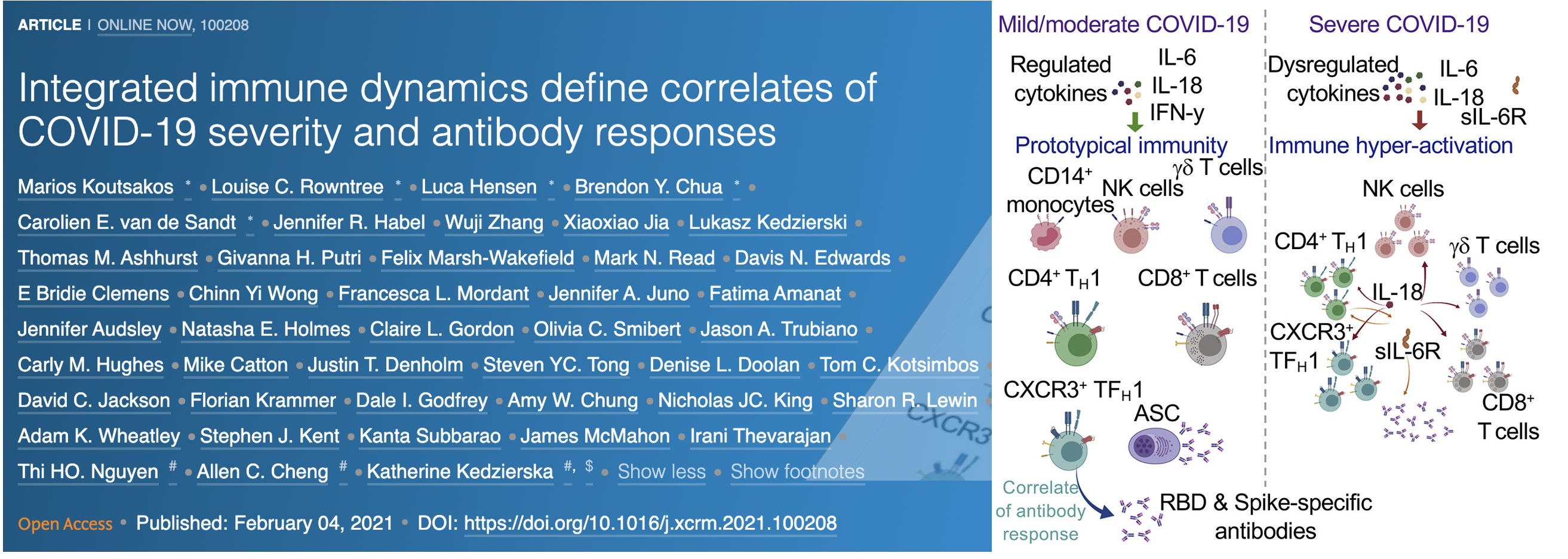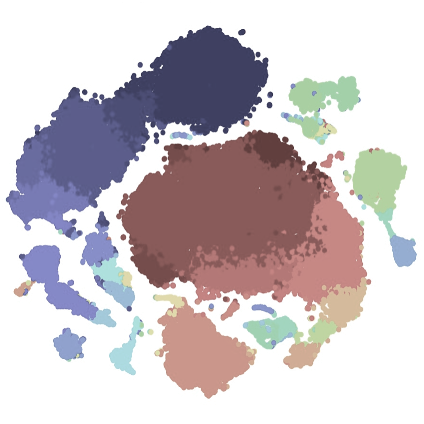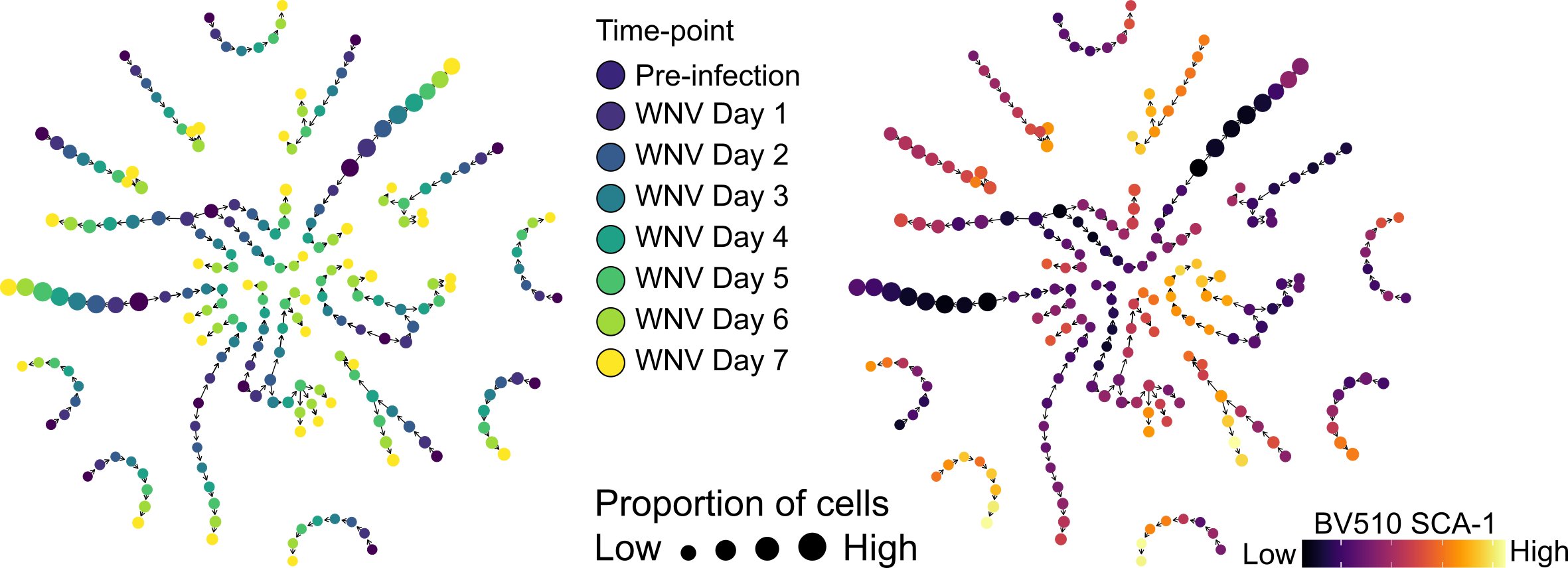2021-06-10 - Preprint - TrackSOM - mapping immune response dynamics through sequential clustering of time- and disease-course single-cell cytometry data
Givanna Haryono Putri, Jonathan Chung, Davis N Edwards, Felix Marsh-Wakefield, Suat Dervish, Irena Koprinska, Nicholas JC King, Thomas Myles Ashhurst, Mark Norman Read. bioRxiv 2021.
Abstract: Mapping the dynamics of immune cell populations over time or disease-course is key to understanding immunopathogenesis and devising putative interventions. We present TrackSOM, an algorithm which delineates cellular populations and tracks their development over a time- or disease-course of cytometry datasets. We demonstrate TrackSOM-enabled elucidation of the immune response to West Nile Virus infection in mice, uncovering heterogeneous sub-populations of immune cells and relating their functional evolution to disease severity. TrackSOM is easy to use, encompasses few parameters, is quick to execute, and enables an integrative and dynamic overview of the immune system kinetics that underlie disease progression and/or resolution.
Application of TrackSOM in COVID-19


Integrated immune dynamics define correlates of COVID-19 severity and antibody responses
M Koutsakos, LC Rowntree, L Hensen, BY Chua, CE van de Sandt, JR Habel, W Zhang, X Jia, L Kedzierski, TM Ashhurst, GH Putri, F Marsh-Wakefield, MN Read, DN Edwards, … THO Nguyen, AC Cheng, K Kedzierska. Cell Reports Medicine 2021.
Abstract: SARS-CoV-2 causes a spectrum of COVID-19 disease, the immunological basis of which remains ill-defined. We analysed 85 SARS-CoV-2-infected individuals at acute and/or convalescent timepoints, up to 102 days post-symptom onset, quantifying 184 immunological parameters. Acute COVID-19 presented with high levels of IL-6, IL-18 and IL-10 and broad activation marked by upregulation of CD38 on innate and adaptive lymphocytes and myeloid cells. Importantly, activated CXCR3+cTFH1 cells in acute COVID-19 significantly correlate with and predict antibody levels and their avidity at convalescence as well as acute neutralisation activity. Strikingly, intensive care unit (ICU) patients with severe COVID-19 display higher levels of soluble IL-6, IL-6R, IL-18, and hyperactivation of innate, adaptive and myeloid compartments than patients with moderate disease. Our analyses provide a comprehensive map of longitudinal immunological responses in COVID-19 patients and integrate key cellular pathways of complex immune networks underpinning severe COVID-19, providing important insights into potential biomarkers and immunotherapies.

